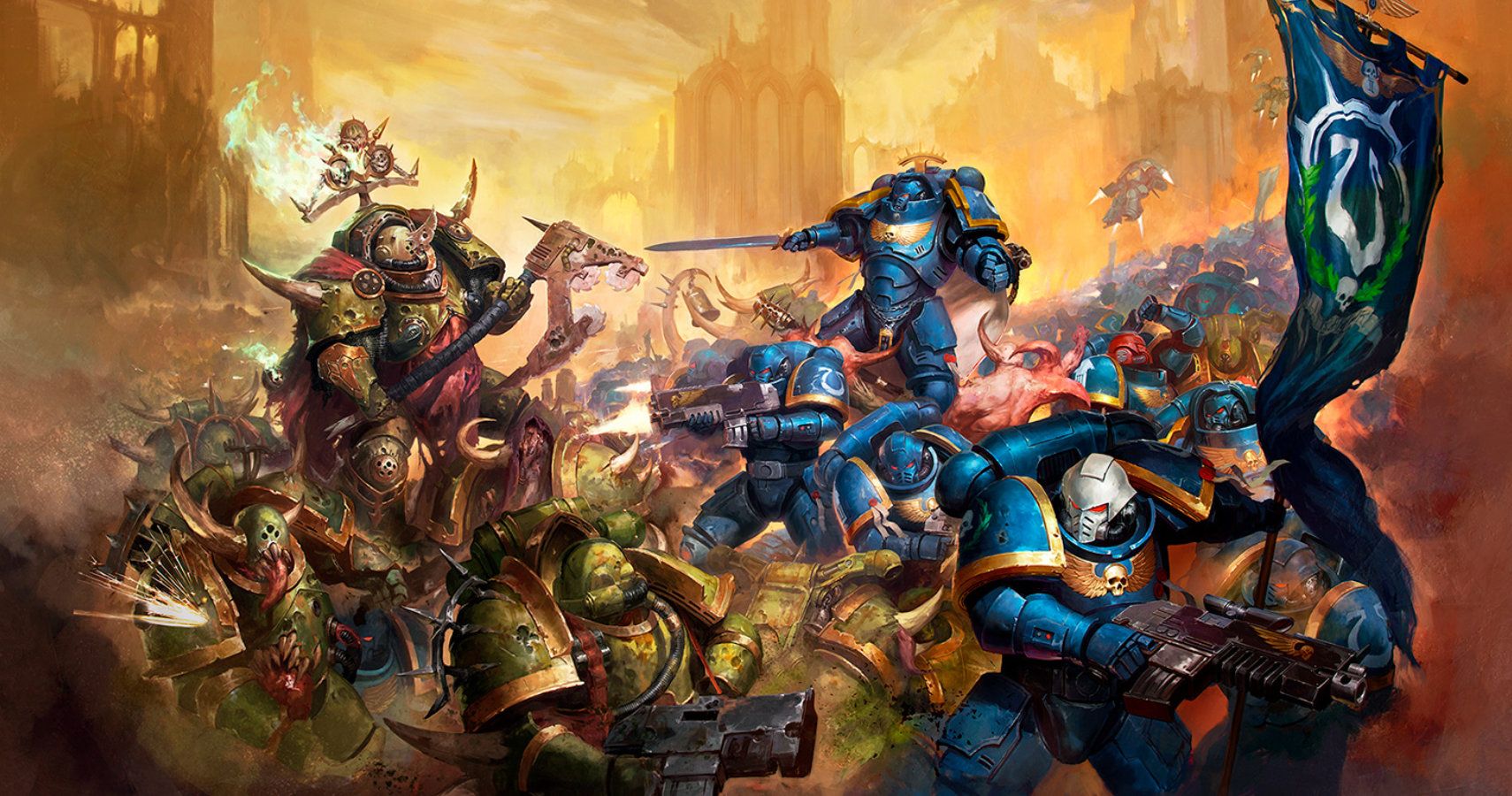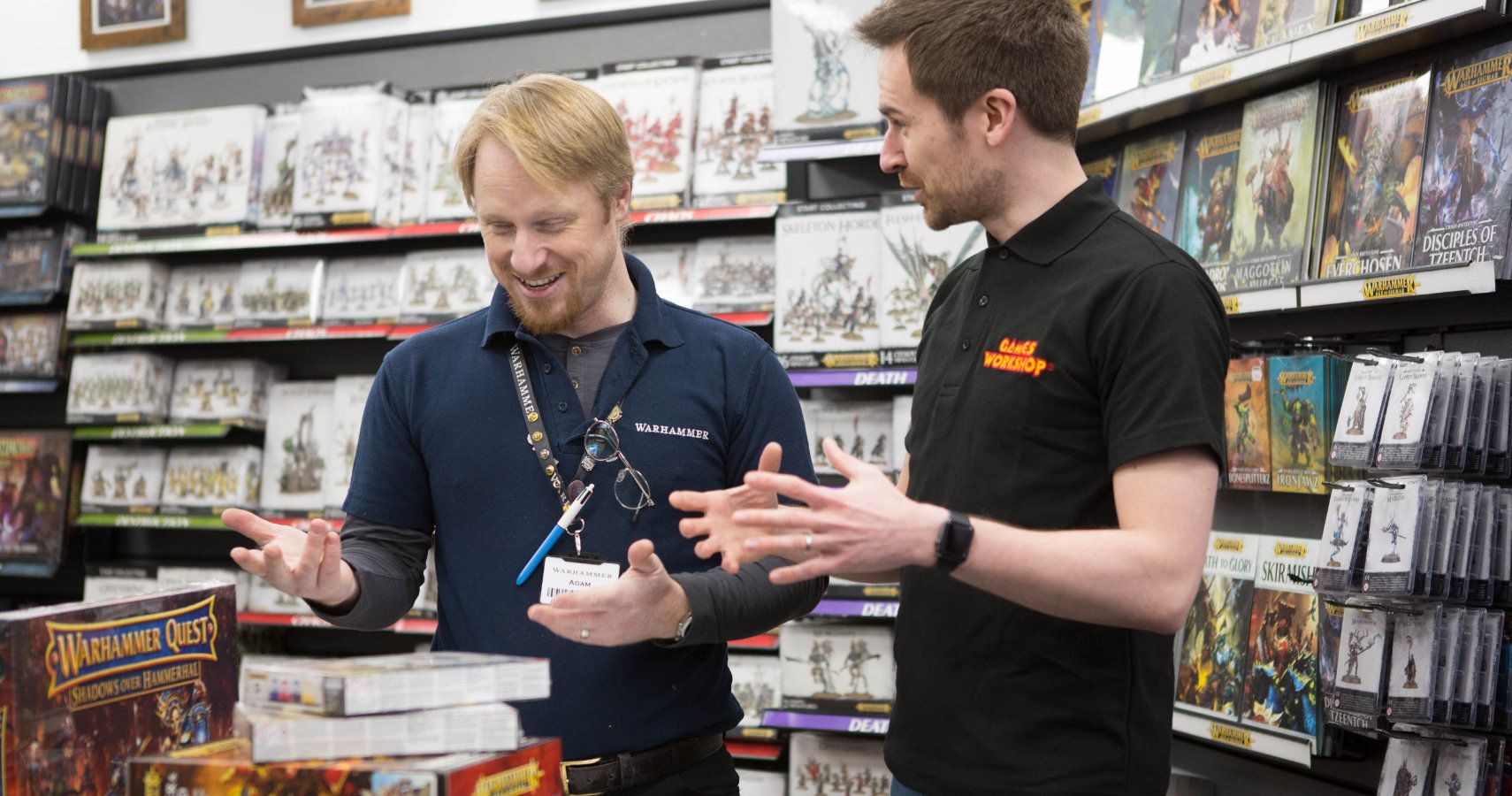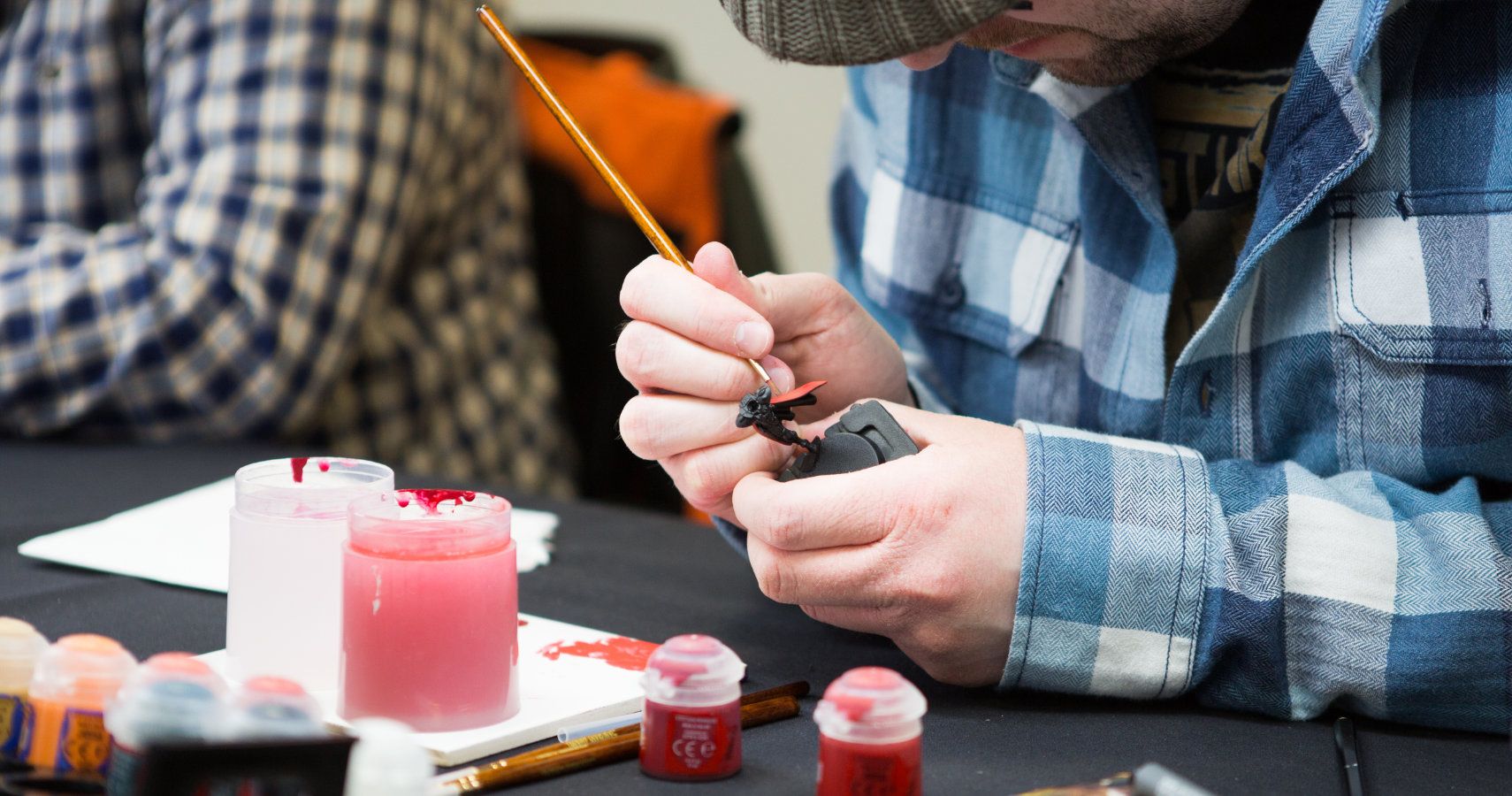With the recent announcement of the 9th edition, it has never been a better time to start playing Warhammer 40,000. To an outsider the game can be a bit intimidating and may feel overwhelming at times, but in our guide we’ll break it down and tell you what you need to start playing. We’ll also look at the hobby as a whole and the benefits playing can bring to younger gamers.
What Is Warhammer 40,000?
Warhammer 40,000 is a science fiction wargame set in the 41st millennium. Players build an army and fight it out on the table-top using a set of rules to help simulate combat. There are several armies to field, ranging from genetically modified humans known as Space Marines, space-bound Orks and Aeldari (Elves), Chaos-infected mutations, and many other alien races. Games usually last an hour or less and take place over a series of turns where each player makes moves, takes actions, or targets an enemy. The pawns or playing pieces are intricately designed plastic miniatures and are assembled and painted by the player as part of the hobby.
What You Need To Play
For many, their first experience of Warhammer 40,000 will be at their local Games Workshop or independent gaming store. Most stores will have gaming tables set up and experienced staff who know the rules. They will be happy to run you through your first few games allowing you to get a good feel for it. You will probably play with tangible terrain and models, rather than scraps of paper, and there is something to be said about that tactile feeling you get. Everything you need to start playing, collecting, and painting will be under one roof.
Games Workshop provides a free edition of the rules on their website. This is a great way to get started as there's no initial investment to make. You don’t get any of the lore or army lists – you will need to purchase the full edition for that – but it will be enough to help you learn the game.
Once you are certain Warhammer 40,0000 is the game for you, it is time to make your first purchase. But when you go to the store, there are a lot of boxes. Where does one start? There are currently three ways to obtain the core rules: Digital rulebook, Physical rulebook, and the introductory starter set.
The starter set contains a full hardback rule book, basic army lists, dice, and models for two different armies. This is the perfect purchase if you have nothing to start with or want to take advantage of the new models in an existing army. It’s even better if you team up with someone who wants one of the armies, as you can split the cost or sell what you don’t need.
If either of the starter set armies doesn’t tickle your fancy, you can always pick up the rulebook on its own and investigate the codices. These will outline the background behind the various armies you can field. Once settled on an army, pick up the codex for it and the ‘start collecting’ box. These are available for all the different armies you can field and they contain enough models/units to get you going. They also work out cheaper than buying them separately. You should start small and build your collection over time. It's easy to overwhelm yourself with ‘too many’ plastic models; this can detract from the reason you started to play – to have fun.
The wider hobby
Now that you have your rules, codex, and plastic models, what next? Before you can play you will have to assemble your models as they come in multiple parts. An X-acto knife comes in handy to trim the models from their sprues and some plastic glue will hold things together. This is all you need to start playing with a friend, but they won’t look as impressive as the pictures on the box. This is where the fun really starts: painting your armies. A range of tools, paints, and brushes are available from GW under their citadel line but you are not limited to these. There are plenty of other brands with similar products available. If you are looking for a faithful match to the box art however, you are better off buying citadel paints. The paint names appear in all GW guides and it can be difficult to find a direct match from other paint brands.
Another important aspect of the hobby is being a part of the local community. Ask at your local games store if they run events or know of any gaming clubs that do. These usually meet weekly and are a great way to make new friends, battle, and improve your skills in tabletop warfare. Check their rules as there may be some requirements such as a minimum army size or it may have to be fully painted before you can play.
Finally, If you are the parent of a younger gamer, you should supervise hobby sessions as some of the tools may be sharp. Teaching safe tool usage is a beneficial life-long skill. There are also other benefits to be found. Painting also helps promote the creative and artistic side and a positive side effect of playing the game is improved literacy. There is a lot of reading involved as gamers explore the lore and rules of the game. Communication and social skills also improve as players interact with like-minded people.



